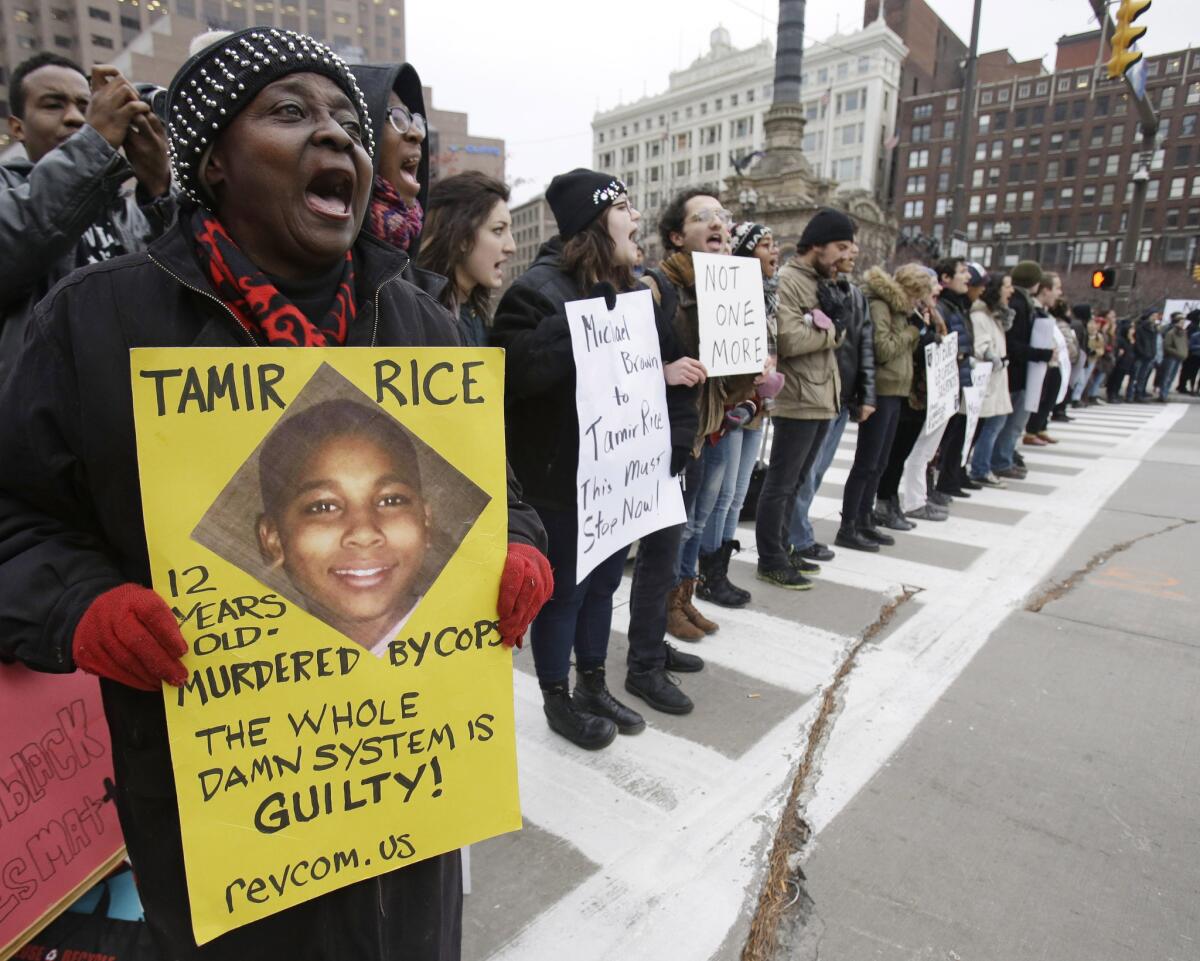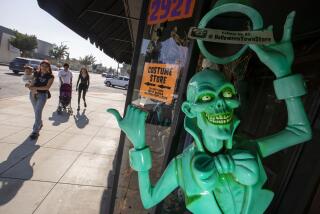Op-Ed: Why America is still living with the damage done by the ‘superpredator’ lie

- Share via
Twenty-five years ago, John DiIulio, a political science professor, created and disseminated one of the most dangerous and lethal lies in our history. He coined the term “superpredator,” depicting Black children as remorseless animals who would prey on victims.
Make no mistake, racism propelled the spread of this theory. DiIulio insisted that this younger, more dangerous breed of offender would soon target “upscale central-city districts, inner-ring suburbs, and even the rural heartland.” His warning was clear: White America was in danger. The response was swift and unrelenting. The media immediately exploited and sensationalized his claims.
Politicians from both parties joined to pass draconian crime bills. And the public eagerly consumed the story. The superpredator lie went viral, infecting every single institution that touches children — courts, schools, law enforcement. In the end, it robbed Black children of their youth and the protections of childhood.
But the superpredator prediction was fiction. The crime wave DiIulio predicted never materialized. Juvenile crime rates actually dropped between 1994 and 2000. Of course, that did not slow politicians who nimbly ignored that data and pushed “adult time for adult crime” legislation.
Even when DiIulio admitted being wrong about his predictions, his retraction could not dislodge this country’s already-formed assumptions that young Black males were coldblooded and dangerous. Today, virtually every state still permits middle schoolers to be prosecuted as adults, exposing them to adult punishment. The overwhelming majority of those kids are Black.
What made this superpredator story so easy to swallow — and so stubbornly intractable?
The answer is simple and damning. The superpredator myth glommed onto a deeper lie rooted in American soil and in the American psyche. A lie that insists that Black children do not deserve the care we reflexively offer white children. All that was needed was the barest of information, and our worst beliefs filled out the contours of the story.
Sadly, this lie is an American phenomenon with intergenerational effects. During slavery, white slavers separated children from their mothers because a child could garner a greater profit. This was not just profiteering. This was insisting that Black children were chattel, not human. During the Jim Crow era, white mobs lynched Black children if they dared to cross a racial boundary that white society invented and ruthlessly enforced. Again, the lesson: Black children weren’t like other children. They needed to “know their place” in the racial caste. The nation was primed to expect the disparate treatment of Black children as appropriate or deserved.
By the time the claim that Black children were predators came along, the false stories were so culturally embedded that the public accepted this newest lie without question. Dehumanizing Black children allowed Americans to withstand any tug of moral constraint as children as young as 9 were charged as adults in the criminal justice system.
Linking Black children to animal traits made them seem less human. Nazi Germany had depicted Jews as “vermin” or “rodents” to relieve the public of all feelings of sympathy or empathy. In the same way, dehumanizing language put Black children outside the boundaries of childhood and allowed this country to remain unbothered by the fact that judges were sentencing children to die in prison under sentences of life without parole.
Choosing who counts as a child is steeped in this country’s racism. When Kyle Rittenhouse, a white 17-year-old, opened fire on a street in Kenosha, Wis., killing two protesters this summer, pundits and political operatives were quick to describe him as a “little boy out there trying to protect his community.” Even when he walked past police toting a semiautomatic rifle, police did not stop or question him. A Black 17-year-old armed with a semiautomatic would not have lived to tell the story.
But Rittenhouse was not perceived as dangerous. He was seen as a child. Contrast that with Tamir Rice. Cleveland Police Dfficer Timothy Loehmann sized up Tamir, a 12-year-old boy playing with a toy gun, in a split second. He saw the boy as dangerous and shot and killed him within two seconds of getting out of his patrol car. The inability to see Tamir as a child cost him his life.
It has been a generation since the superpredator myth entered public discourse and we are still living with its pernicious effects. The justice system needs to stop referring children into the adult criminal justice system so that Black children get the benefit of the doubt instinctively given to white children.
More broadly, any racial reckoning needs to confront and check the reflex that leads us to see Black children as expendable. Maybe then we can begin to undo the untold damage of the superpredator lie.
Kim Taylor-Thompson is a professor of law at NYU School of Law and chair of the board of the Equal Justice Initiative.
More to Read
A cure for the common opinion
Get thought-provoking perspectives with our weekly newsletter.
You may occasionally receive promotional content from the Los Angeles Times.










